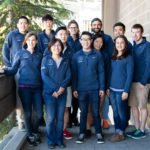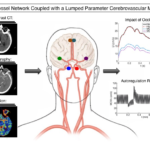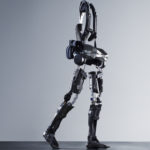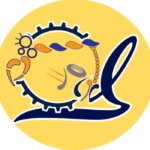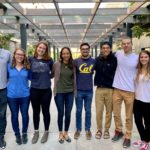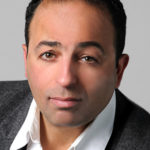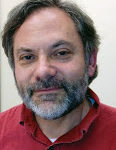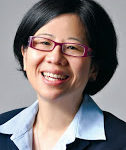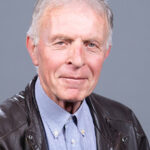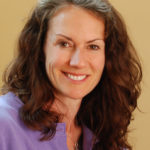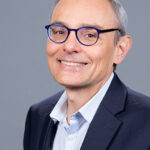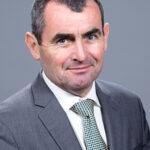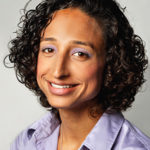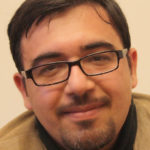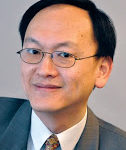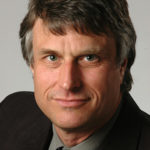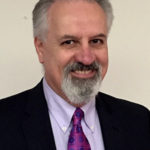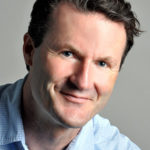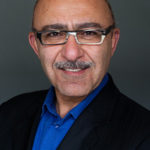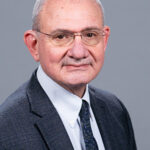The Bone Biomechanics Lab — originally called the Berkeley Orthopedic Biomechanics Laboratory — was established by Professor Tony Keaveny in 1993. Together with Professor Grace O’Connell, Professor Keaveny now co-directs the Berkeley BioMechanics Lab in the Department of Mechanical Engineering at the University of California, Berkeley. The Bone Lab, Professor Keaveny’s group within the Berkeley …
Research Interest
Sohn Research Laboratory
Our lab broadly focuses on two major themes: cancer and stem-cell biology. For cancer, we are developing and employing quantitative, label-free techniques to isolate, screen, and identify cells for biomedical-research and for clinical diagnostic and monitoring applications. For stem-cell biology, we are developing lab-on-a-chip systems that would enable us to study stem cells in their specialized …
Shadden Lab
Our research focuses on the advancement of theoretical and computational methods to quantify complex fluid flow. Much of our research is geared towards modeling and analyzing hemodynamic conditions in the cardiovascular system. This multidisciplinary research combines advances in medical imaging, mathematical modeling, and computational mechanics. Our motivations for this research are 3-fold: (1) to uncover …
Medical Polymer Group
The MPG represents an interdisciplinary team of graduate and undergraduate students who work closely with faculty, surgeons, and industry scientists in order to develop biomaterials for structural function in orthopedic applications. We bring together academic, industrial and clinical perspectives to improve designs and materials used in total joint reconstruction and related devices. Our research broadly …
Berkeley Robotics & Human Engineering Laboratory
Our research activities are focused on the design and control of a class of robotic systems worn or operated by humans to augment human mechanical strength, while the wearer’s intellect remains the central control system for manipulating the robot. Human power extenders can be used to maneuver heavy loads with great dexterity, speed, and precision, …
Molecular Cell Biomechanics Laboratory
Mofrad Lab combines the state-of-the-art molecular and multiscale biomechanics, computational biology and bioinformatics, and statistical machine learning approaches toward understanding and diagnosis of human diseases.
Berkeley Biomechanics Laboratory
Our lab is focused on soft tissue biomechanics and tissue regeneration. Specifically, our goal is to understand the mechanical function of the healthy, degenerated and injured soft tissues, including the intervertebral disc and articular cartilage, in order to develop more physiologically relevant repair strategies. Injury, through herniation, or degeneration may lead to debilitating lower back …
Tarek I. Zohdi
Will C. Hall Family Chair in Engineering
Associate Dean for Research, College of Engineering
Will C. Hall Endowed Chair
Chair of the UCB Computational & Data Science & Engineering Program
Professor of Mechanical Engineering
University of California, Berkeley
Berkeley, CA 94720-1740
zohdi@berkeley.edu
For more information see: Professor Zohdi's CV
Research Group Website
Books and Publications
Associate Dean for Research, COE
Editor CMAME
Editor-in-Chief, Comp. Particle Mechanics
Chair, D.E. in Comp. and Data Science Eng. Program
Faculty Scientist, Lawrence Berkeley National Lab
Director, UC-DEWA
Director, Fire Research Group
Director, Next Generation Food Systems Center
Faculty Director, Masters of Advanced Studies-Engineering
David Steigmann
Professor of Mechanical Engineering
6133 Etcheverry HallUniversity of California, Berkeley
Berkeley, CA 94720-1740
dsteigmann@berkeley.edu
(510) 643-3165
For more information see: Current Classes Taught
To view Professor Steigmann’s CV, please click here.
Research Description:
Continuum, mechanics, shell theory, finite elasticity, variational methods, stability, surface stress, capillary phenomena, mechanics of thin films.
Key Publications:
To view a list of Professor Steigmann’s publications, please click here.
Lydia Sohn
Almy C. Maynard and Agnes Offield Maynard Chair in Mechanical Engineering
Chancellor's Professor
Professor of Mechanical Engineering
Almy C. Maynard and Agnes Offield Maynard Chair in Mechanical Engineering
University of California, Berkeley
Berkeley, CA 94720-1740
sohn@berkeley.edu
(510) 642-5434
For more information see: Sohn Research Lab
Current Classes Taught
To view Professor Sohn’s CV, please click here.
Research Description:
Micro-nano engineering, bioengineering
Key Publications:
To view a list of Professor Sohn’s publications, please visit the Sohn Research Lab website.
Shawn Shadden
Professor of Mechanical Engineering
6149 Etcheverry HallUniversity of California, Berkeley
Berkeley, CA 94720-1740
shadden@berkeley.edu
(510) 664-9800
For more information see: Shadden Lab
Current Classes Taught
Research Description:
Cardiovascular Biomechanics, Computational Mechanics, Computational Fluid Dynamics, Dynamical Systems, Fluid Dynamics, Lagrangian Coherent Structures, Mathematical Modeling, Thrombosis
Key Publications:
To view a list of Professor Shadden’s publications, please visit the Shadden Lab website.
Ömer Savaş
Professor of Mechanical Engineering
6113 Etcheverry HallUniversity of California, Berkeley
Berkeley, CA 94720-1740
savas@berkeley.edu
(510) 642-5705
For more information see: Current Classes Taught
To view Professor Savaş’ CV, please click here.
Research Description:
Fluid mechanics: aircraft wake vortices; biofluid mechanics; boundary layers; instrumentation; rotating flows; transient aerodynamics; turbulent flows; vortex dynamics
To learn more about Professor Savaş’ research, please click here.
Key Publications:
To view a list of Professor Savaş’ publications, please click here.
Lisa Pruitt
Lawrence Talbot Chair in Engineering
Distinguished Professor of Mechanical Engineering
Lawrence Talbot Chair in Engineering
University of California, Berkeley
Berkeley, CA 94720-1740
lpruitt@berkeley.edu
For more information see: Medical Polymer Group
Current Classes Taught
To view Professor Pruitt’s CV, please click here.
Research Description:
Research is focused on structure-property relationships in orthopedic tissues, biomaterials and medical polymers. Current projects include the assessment of fatigue fracture mechanisms and tribological performance of orthopedic biomaterials, as well as characterization of orthopedic tissues and associated devices. Surface modifications using plasma chemistry are used to optimize polymers for medical applications. Attention is focused on wear, fatigue and multiaxial loading. Retrievals of orthopedic implants are characterized to model in vivo degradation and physiological loading. Biomechanical characterization of structural tissues is performed to assess clinical treatments and to develop constitutive relationships. Laboratory techniques for structural characterization include SEM, TEM, FEM, SAXS, USAXS, XPS, DSC, GPC, FTIR, AFM, confocal microscopy, wear testing, fatigue testing, fracture mechanics analysis, and nanoindentation. Research has been supported by NIH, NSF, ONR, DARPA, OREF and industry. Pedagogical experience includes curriculum development in mechanical engineering and bioengineering. Teaching includes freshman seminars; undergraduate courses on Mechanical Behavior and Processing of Materials, Structural Aspects of Biomaterials, and Principles of Bioengineering; graduate courses on Fracture Mechanics, Mechanical Behavior of Materials, and Polymer Engineering.
Key Publications:
2014
F. Ansari, C. Major, T. R. Norris, S. B. Gunther, M. Ries, and L. Pruitt. “Unscrewing instability of modular reverse shoulder prosthesis increases propensity for in vivo fracture: a report of two cases.” Journal of shoulder and elbow surgery/American Shoulder and Elbow Surgeons…[et al.] 23, no. 2 (2014): e40-5.
E.W. Patten, D. Van Citters, M. D. Ries, and L. Pruitt. “Quantifying cross-shear under translation, rolling, and rotation, and its effect on UHMWPE wear.” Wear 313, no. 1 (2014): 125-134.
To view a complete list of Professor Pruitt’s publications from previous years, please click here.
Panayiotis Papadopoulos
Byron and Elvira Nishkian Chair in Structural Engineering
Distinguished Professor of Mechanical Engineering
Byron and Elvira Nishkian Chair in Structural Engineering
Director of CoE Aerospace Engineering Programs
University of California, Berkeley
Berkeley, CA 94720-1740
panos@berkeley.edu
(510) 642-3358
For more information see: Computational Solid Mechanics Lab
Current Classes Taught
RELATED EXPERIENCE
7/1/04 – present : Professor, University of California, Berkeley
7/1/98 – 6/30/04 : Associate Professor, University of California, Berkeley
7/1/92 – 6/30/98 : Assistant Professor, University of California, Berkeley
1/1/92 – 6/30/92 : Post-Doctoral Researcher, University of California, Berkeley
8/1/91 – 12/31/91 : University Lecturer, University of California, Berkeley
1/1/88 – 8/31/91 : Graduate Research Assistant, University of California, Berkeley
8/1/87 – 5/31/90 : Graduate Student Instructor, University of California, Berkeley
UNIVERSITY DEGREES
Ph.D. Civil Engineering, University of California, Berkeley, December 1991
M.S. Civil Engineering, University of California, Berkeley, May 1987
Dipl. Civil Engineering, Aristotle University, Thessaloniki, Greece, July 1986
Research Description:
Computational mechanics, solid mechanics, biomechanics, applied mathematics
Key Publications:
To view a list of Professor Professor Papadopoulos’ publications, please visit the Computational Solid Mechanics Lab website.
Oliver M. O’Reilly
Distinguished Professor of Mechanical Engineering
Paul R. Gray Distinguished Chair
Vice Provost for Undergraduate Education
University of California, Berkeley
Berkeley, CA 94720-1740
oreilly@berkeley.edu
(510) 642-0877
For more information see: Dynamics Lab
Current Classes Taught
Oliver M. O’Reilly is the Vice Provost for Undergraduate Education, the Faculty Athletics Representative, and a Distinguished Professor of Mechanical Engineering at the University of California at Berkeley
He received his B.E. in Mechanical Engineering from the National University of Ireland, Galway (NUIG). Subsequently, he received his M.S. and Ph.D. degrees in Theoretical and Applied Mechanics from Cornell University. At Cornell, he studied under Phil Holmes and Frank Moon. After spending two years as a postdoc at the Institut für Mechanik at ETH-Zürich under Jürg Dual, he joined the faculty in Mechanical Engineering at Cal in 1992. He has previously served as the Chair and Vice Chair of the Berkeley Division of the Academic Senate and as an Associate Dean for Graduate Education in the Division of Computing, Data Science, and Society.
His interests span the fields of continuum mechanics and nonlinear dynamics. He has a broad range of specializations including directed (or Cosserat) theories of deformable bodies, constrained rigid body dynamics, contact mechanics, linear and nonlinear vibrations and linear and nonlinear dynamics of deformable bodies. He has applied these interests to a range of applications including soft robots, MEMS resonators, brake squeal, the dynamics of toys, motorcycle navigation, axially moving media, artificial and natural satellites, spinal kinematics and vehicle collision dynamics.
O’Reilly has coauthored over 100 archival journal articles, written three textbooks, coauthored a monograph, and is a co-inventor on two patents. He has also received multiple teaching awards including U.C. Berkeley’s Distinguished Teaching Award in 1999, the Pi-Tau-Sigma Professor of the Year Award in 2003 and the Tau-Beta-Pi Outstanding Faculty of the Year Award in 2013. He is also a recent recipient of the Berkeley Faculty Service Award.
To view Professor O’Reilly’s CV, please click here.
Research Description:
Dynamics, Vibrations, Continuum Mechanics
Key Publications:
To view a list of Professor O’Reilly’s publications, please visit the Dynamics Lab website.
Grace D. O’Connell
Professor of Mechanical Engineering
Associate Dean for Inclusive Excellence, College of Engineering
University of California, Berkeley
Berkeley, CA 94720-1740
g.oconnell@berkeley.edu
(510) 642-3739
For more information see: O'Connell Lab
Current Classes Taught
Education
2001 – 2004 B.S. Aerospace Engineering, University of Maryland
2004 – 2009 Ph.D. Bioengineering, University of Pennsylvania
2009 – 2013 Postdoctoral Research Scientist, Columbia University
Research Description:
Biomechanics of cartilage and intervertebral disc; tissue engineering; continuum modeling of soft tissues; intervertebral disc function, degeneration, and regeneration
Key Publications:
2015
Tan AR, Alegre-Aguaron E, O’Connell GD, VandenBerg CD, Aaron RK, Vunjak-Novakovic G, Bulinski JC, Ateshian GA, Hung CT. Passage-Dependent Relationship between Mesenchymal Stem Cell Mobilization and Chondrogenic Potential. Osteoarthritis and Cartilage, In Press
2014
O’Connell GD, Newman IB, Carapezza MA. Effect of long-term osmotic loading culture on matrix synthesis from intervertebral disc cells. BioResearch, Oct 1;3(5):242-9, 2014.
Ponnurangam S, O’Connell GD, Chernyshova I, Woods K, Somasundaran P, Hung CT. Ceria nanoparticles modulate development and interleukin response of chondrocyte-seeded hydrogel constructs. Tissue Engineering, Part A, Nov; 20(21-22):2908-19, 2014.
O’Connell GD, Nims R, Green J, Cigan A, Ateshian GA, Hung CT. Time and dose-dependent effects of chondroitinase ABC on growth of engineered cartilage. eCells and Materials Journal, Vol. 27: 312-320, 2014.
To view a complete list of Professor O’Connell’s publications from previous years, please visit the Berkeley Biomechanics Laboratory website.
Mohammad R. K. Mofrad
Professor of Mechanical Engineering and Bioengineering
208A Stanley Hall #1762University of California, Berkeley
Berkeley, CA 94720-1762
mofrad@berkeley.edu
(510) 643-8165
For more information see: Molecular Cell Biomechanics Laboratory
Current Classes Taught
Education
1991 B.A.Sc., Sharif University of Technology
1994 M.A.Sc., University of Waterloo
1999 Ph.D., University of Toronto
Professional Experience
1999 – 2000 Post-Doc, Computer Science Department, University of Toronto
2000 – 2002 Post-Doc, MIT and Harvard Medical School/Mass. General Hospital
2002 – 2004 Principal Research Scientist, Biological and Mechanical Engineering, MIT
2005 – 2010 Assistant Professor, Department of Bioengineering, University of California, Berkeley
2010 – 2013 Associate Professor, Department of Bioengineering, University of California, Berkeley
2011 Visiting Professor, Department of Bioengineering, EPFL, Lausanne, Switzerland
2012 – 2013 Associate Professor, Department of Mechanical Engineering, University of California, Berkeley
2012 – Present Faculty Scientist, Molecular Biophysics, Lawrence Berkeley National Lab
2012 – 2014 Faculty Director, UC Berkeley Master of Bioengineering (M.Eng) Program
2013 – Present Professor, Departments of Bioengineering and Mechanical Engineering, University of California, Berkeley
2014 – 2015 Faculty Co-Director, Berkeley-UCSF Master of Translational Medicine (MTM) Program
Research Description:
Multiscale Biomechanics of Cardiovascular Disease and Brain Injury; Molecular and Cellular Mechanobiology; Mechanics of Integrin-Mediated Focal Adhesions; Mechanics of the Nuclear Pore and Nucleocytoplasmic Transport
Key Publications:
To view a list of Professor Mofrad’s publications, please visit the Molecular Cell Biomechanics Laboratory website and PubMed.
Liwei Lin
James Marshall Wells Academic Chair in Mechanical Engineering
Distinguished Professor of Mechanical Engineering
James Marshall Wells Academic Chair
Co-Director, Berkeley Sensor & Actuator Center
University of California, Berkeley
Berkeley, CA 94720-1740
lwlin@berkeley.edu
(510) 643-5495
For more information see: Lin Lab
Lin Home Page
Current Classes Taught
2006 – 2009 Vice Chair – Graduate Study, Mechanical Engineering Department, University of California at Berkeley
2004 Professor, Mechanical Engineering Department, University of California at Berkeley
2001 Associate Professor, Mechanical Engineering Department, University of California at Berkeley
1999 Assistant Professor, Mechanical Engineering Department, University of California at Berkeley
1996 Assistant Professor, Mechanical Engineering Department, University of Michigan
1994 Associate Professor, Institute of Applied Mechanics, National Taiwan University
1993 Senior Research Scientist, BEI Electronics Inc.
1993 PhD, Mechanical Engineering, University of California at Berkeley
1991 MS, Mechanical Engineering, University of California at Berkeley
1986 BS, Power Mechanical Engineering, National Tsing Hua University
Research Description:
MEMS (Microelectromechanical Systems); NEMS (Nanoelectromechanical Systems); Nanotechnology; design and manufacturing of microsensors and microactuators; development of micromachining processes by silicon surface/bulk micromachining; micromolding process; mechanical issues in MEMS including heat transfer, solid/fluid mechanics, and dynamics.
Key Publications:
For a list of Professor Lin’s publications, please click here.
Dorian Liepmann
Professor of Mechanical Engineering and BioEngineering
280 Hearst Memorial Mining BuildingUniversity of California at Berkeley
Berkeley, CA 94720-1762
liepmann@berkeley.edu
(510) 355-8353
For more information see: Liepmann Lab
Current Classes Taught
Research Description:
BioMEMS, microfluid dynamics, experimental biofluid dynamics, hemodynamics associated with valvular heart disease and other cardiac and arterial flows.
Key Publications:
2015
- Paredes, J., Fink, K.D., Novak, R. and Liepmann, D. (2015) “Self-anchoring nickel microelectrodes for rapid fabrication of functional thermoplastic microfluidic prototypes.” Sensors and Actuators B: Chemical, 216:263-270.
- Aran, K., Paredes, J., Rafi, M., Yau, J., Acharya, A., Zibinsky, M., Liepmann, D., and Murthy, N. (2015) “Stimuli-Responsive Electrodes Detect Oxidative Stress and Liver Injury.” Advanced Materials, 27(8), 1432.
- Viswanathan, S., Narayanan, T.N., Aran, K., Fink, K.D., Paredes, J., Ajayan, P.M., Filipek, S., Miszta, P., Tekin, H.C., Inci, F., Demirci, U., Li, P., Bolotin, K.I., Liepmann, D. and Renugopalakrishanan, V. (2015) “Grephene-protein field effect biosensors: glucose sensing.” Materials Today, http://dx.doi.org/10.1016/j.mattod.2015.04.003
2014
- Aran, K., Paredes, J., Yau, J., Srinivasan, S., Murthy, N. and Liepmann, D. (2014) “An Enzyme-Free Digital Biosensor for Detection of Reactive Oxygen Species.” The 18th International Conference on Miniaturized Systems for Chemistry and Life Sciences (MicroTAS), San Antonio, TX. October 26-30, 2014
- Paredes, J., Chooljian, M., Fink, K.D., and Liepmann, D. “Rapid fabrication method for plastic microfluidic devices with embedded 2D and 3D microelectrodes and its application to electroporation and cell lysis on chip.” The 18th International Conference on Miniaturized Systems for Chemistry and Life Sciences (MicroTAS), San Antonio, TX. October 26-30, 2014
- Aran, K., Paredes, J., Acharya, A., Yau, J., Liepmann, D. and N. Murthy. “A Novel ROS Responsive Polymer Based Lab-on-a-Chip Sensor for Detection of Circulating Lipid Hydroperoxides” BMES, San Antonio, TX, October 22-25, 2014.
- Paredes, J., Fink, K.D., Chooljian, M., and D. Liepmann. “Integrating 2D and 3D Microelectrodes in Plastic Microfluidic Devices Allowing Spatial and Temporal Control of Electric Fields for Detection or Stimulation.” BMES, San Antonio, TX, October 22-25, 2014.
- Aran, K., Paredes, J., Lee, K., Acharya, A., Liepmann, D. and N. Murthy. “A Battery-less Pressure Driven Smart Pill for Oral to Systemic Protein Delivery.” BMES, San Antonio, TX, October 22-25, 2014.
- Fink, K., Paredes, J. and Liepmann, D. (2013) The Role of Erythrocyte Size and Shape in Microchannel Fluid Dynamics. American Physical Society Division of Fluid Dynamics Annual Meeting, Pittsburgh, PA.
- Kim, T. N., Goodwill, P. W., Chen, Y., Conolly, S. M., Schaffer, C. B., Liepmann, D., & Wang, R. A. (2012). Line-scanning particle image velocimetry: an optical approach for quantifying a wide range of blood flow speeds in live animals. PloS one, 7(6), e38590.
- Gharib, M., Azizgolshani, H., Gharib, M., & Liepmann, D. (2011). Combined Electro-chemical Stimulation to Reduce the Required Current for Muscle Contraction. FASEB Journal, 25, 1051-39.
- Gulati, S., Dutcher, C. S., Liepmann, D., & Muller, S. J. (2010). Elastic secondary flows in sharp 90 degree micro-bends: A comparison of PEO and DNA solutions. Journal of Rheology (1978-present), 54(2), 375-392.
- Thakar, R.G., Cheng, Q., Patel, S., Chu, J., Nasir, M., Liepmann, D., Komvopoulos, K. and Li, S. (2009) Cell-Shape Regulation of Smooth Muscle Cell Proliferation. Biophysical Journal 96(8):3423-3432.
- Häfeli, U. O., Mokhtari, A., Liepmann, D., & Stoeber, B. (2009). In vivo evaluation of a microneedle-based miniature syringe for intradermal drug delivery. Biomedical microdevices, 11(5), 943-950.
- Gulati, S., Muller, S. J., & Liepmann, D. (2008). Direct measurements of viscoelastic flows of DNA in a 2: 1 abrupt planar micro-contraction. Journal of Non-Newtonian Fluid Mechanics, 155(1), 51-66.
- Liepmann, D., Pisano, A., Stoeber, B., & Zimmermann, S. (2008). U.S. Patent No. 7,415,299. Washington, DC: U.S. Patent and Trademark Office
- Gulati, S., Liepmann, D., & Muller, S. J. (2008). Elastic secondary flows of semidilute DNA solutions in abrupt 90° microbends. Physical Review E, 78(3), 036314.
To view a list of Professor Liepmann’s publications from previous years, please visit the Liepmann Lab website.
Kyriakos Komvopoulos
Distinguished Professor of Mechanical Engineering
5143 Etcheverry HallUniversity of California, Berkeley
Berkeley, CA 94720-1740
kyriakos@me.berkeley.edu
(510) 642-2563
For more information see: Current Classes Taught
Research Description:
Theoretical and numerical studies in nano/microscale contact mechanics, tribology, mechanical behavior of thin-film structures, deposition and characterization of ultrathin films by sputtering and filtered cathodic vacuum arc methods, stress analysis, fracture, and adhesion of dynamic microdevices, plasma-assisted surface modification of biopolymers, surface chemical functionalization for enhanced biocompatibility and cell activity, mechanotransduction effects at the single-cell and tissue levels, and electrospun fibrous scaffolds for tissue engineering.
To learn more about Professor Komvopoulos’ research, please click here.
To view a list of Professor Komvopoulos’ supervised graduate students, postdoctoral fellows, and visiting scholars, please click here.
To view a biographical sketch of Professor Komvopoulos, please click here.
To view the content of courses taught by Professor Komvopoulos, please click here.
Key Publications:
To view a list of Professor Komvopoulos’ publications, please click here.
Tony M. Keaveny
Distinguished Professor of Mechanical Engineering
5124 Etcheverry HallUniversity of California, Berkeley
Berkeley, CA 94720-1740
tonykeaveny@berkeley.edu
(510) 390-1626
For more information see: Bone Biomechanics Lab
Current Classes Taught
Tony Keaveny is a Professor in the Departments of Mechanical Engineering and Bioengineering at the University of California at Berkeley, and the director of the Berkeley Orthopaedic Biomechanics Laboratory. Dr. Keaveny received his B.E. (1984) degree in Mechanical Engineering from University College Dublin, Ireland, and his M.S. (1988) and Ph.D. (1991) degrees, also in Mechanical Engineering, from Cornell University. He spent one year (1990-1991) as a Maurice Mueller Post-Doctoral Fellow in Orthopaedic Biomechanics in the Orthopaedic Biomechanics Laboratory at Beth Israel Hospital, Boston, after which he joined the permanent staff there as a Senior Research Associate (1991- 1993). At the same time, Dr. Keaveny was appointed an Instructor of Orthopaedic Surgery at Harvard Medical School and joined the faculty of the Harvard/M.I.T. Health Sciences and Technology Program. He left Boston and joined the Berkeley faculty in 1993, at which time he established the Berkeley Orthopaedic Biomechanics Laboratory.
Dr. Keaveny has served as Principal Investigator on an NIH FIRST Award and several NIH R01 and R21 grants, a Whitaker Biomedical Engineering Research Grant, an NSF CAREER Award, and numerous industrial grants. In 1996, he received the YC Fung Young Investigator Award from the Bioengineering Division of the American Society of Mechanical Engineers. He was the 2010 winner of the Van C. Mow Medal. As director of the Berkeley OBL, Dr. Keaveny directs and supervises all research in the laboratory, and acts as the faculty research mentor for all students.
Research Description:
Biomechanics: mechanical behavior of bone, finite element modeling and experimentation, design of bone-implant systems, tissue engineering
Key Publications:
To view a list of Professor Keaveny’s publications, please click here.
Homayoon Kazerooni
Professor of Mechanical Engineering
6147 Etcheverry HallUniversity of California, Berkeley
Berkeley, CA 94720-1740
kazerooni@berkeley.edu
(510) 642-2964
For more information see: Berkeley Robotics & Human Engineering Laboratory
Current Classes Taught
Dr. Kazerooni is a professor of Mechanical Engineering at the University of California, Berkeley, where he also serves as the director of the Berkeley Robotics and Human Engineering Laboratory. With more than 30 years of mechanical engineering experience and a doctorate degree from MIT, he is a leading expert in robotics, control sciences, exoskeletons, medical devices, human-machine systems and augmentation, bioengineering, mechatronics design, and intelligent assist devices. Prior to his more well-known research on lower extremity exoskeletons, Dr. Kazerooni led his team at Berkeley to successfully develop robotics systems that enhanced human upper extremity strength. The results of this work led to a new class of Intelligent Assist Devices (IAD) that are currently marketed worldwide by leading material handling corporations for use by manual laborers in distribution centers and factories globally.
Dr. Kazerooni’s later work focuses on the control of human-machine systems specific to lower human extremities. After developing BLEEX, ExoHiker, and ExoClimber–three load-carrying exoskeletons–his team at Berkeley created HULC (Human Universal Load Carrier). It is the first energetically-autonomous, orthotic, lower extremity exoskeleton that allows its user to carry 200-pound weights in various terrains for an extended period, without becoming physically overwhelmed. The technology was licensed to Lockheed Martin. Dr. Kazerooni has also developed lower-extremity technology to aid persons who have experienced a stroke, spinal cord injuries, or health conditions that obligate them to use a wheelchair. His medical exoskeletons, Ekso and Phoenix have successfully allowed those who have been paralyzed to walk, stand, and speak face to face with peers in an upright position. The technologies related to Ekso and Phoenix are licensed to Ekso Bionics and suitX.
In addition to his teaching work and research experience in academia, Dr. Kazerooni is also an entrepreneur. In 2005, he founded Ekso Bionics (eksobionics.com), which went on to become a publicly-owned company in 2014 and now supplies medical exoskeleton (Ekso) to a great number of rehabilitation centers worldwide. Later he founded suitX (suitx.com), a VC, industry, and government funded company that provides industrial and medical exoskeletons. suitX was acquired by Ottobock, the largest European medical device company in late 2021.
Dr. Kazerooni has won numerous awards including Discover Magazine’s Technological Innovation Award, the McKnight-Land Grant Professorship, and has been a recipient of the outstanding ASME Investigator Award. His research was recognized as the most innovative technology of the year in New York Times Magazine. He has served in a variety of leadership roles in the mechanical engineering community and was notably the editor of two journals: ASME Journal of Dynamics Systems and Control and IEEE Transaction on Mechatronics. A recognized authority on robotics, Dr. Kazerooni has published more than 200 articles to date, delivered over 130 plenary lectures internationally, and is the inventors of over 200 patents.
Research Description:
Bioengineering, robotics, control systems, mechatronics, design, automated manufacturing and human-machine systems
Key Publications:
To view a list of Professor Kazerooni’s publications, please visit the Berkeley Robotics & Human Engineering Laboratory’s website.
Costas Grigoropoulos
A. Martin Berlin Chair in Mechanical Engineering
A. Martin Berlin Chair in Mechanical Engineering
Distinguished Professor of Mechanical Engineering
University of California, Berkeley
Berkeley, CA 94720-1740
cgrigoro@berkeley.edu
(510) 642-2525
For more information see: Laser Thermal Lab
Current Classes Taught
Costas P. Grigoropoulos received his Diploma Degrees in Naval Architecture and Marine Engineering (1978), and in Mechanical Engineering (1980) from the National Technical University of Athens, Greece. He holds a M.Sc. degree (1983), and a Ph.D. (1986), both in Mechanical Engineering from Columbia University. He joined the faculty of the Department of Mechanical Engineering at the University of California at Berkeley as an Assistant Professor in 1990, after serving as an Assistant Professor of Mechanical Engineering at the University of Washington from 1986-1990. He was promoted to Associate Professor in July 1993 and to Professor in Mechanical Engineering in July 1997. He has conducted research at the Xerox Mechanical Engineering Sciences Laboratory, the IBM Almaden Research Center and the Institute of Electronic Structure and Laser, FORTH, Greece. He is Faculty Staff Scientist with the Environmental Energy Technologies Division of the Lawrence Berkeley National Laboratory.
Research Description:
Laser materials processing and micro/nano-machining, fabrication of flexible electronics and energy conversion devices, characterization of micro/nanofluidic transport, laser interactions with biological materials, architected materials.
Key Publications:
To view a list of Professor Grigoropoulos’ publications, please visit the Laser Thermal Lab website.


